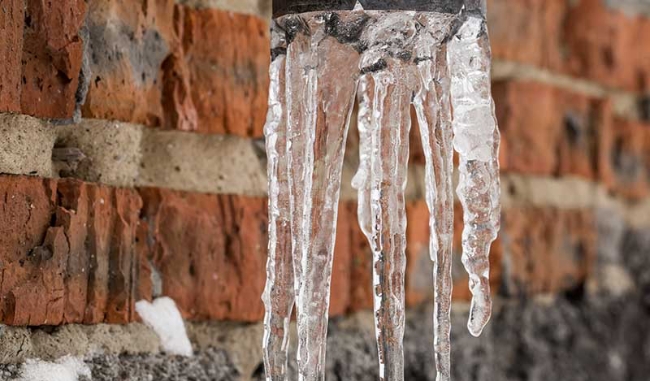Ways to Protect Your Plumbing from Cold Weather: Critical Strategies
Ways to Protect Your Plumbing from Cold Weather: Critical Strategies
Blog Article
The article author is making several great pointers relating to Preventing and dealing with frozen pipes overall in this great article following next.

Winter can ruin your pipes, specifically by freezing pipelines. Below's just how to avoid it from occurring and what to do if it does.
Introduction
As temperatures drop, the threat of icy pipes increases, possibly bring about expensive repair work and water damage. Recognizing exactly how to prevent icy pipes is vital for property owners in cool climates.
Understanding Icy Pipelines
What triggers pipelines to freeze?
Pipelines freeze when subjected to temperatures below 32 ° F (0 ° C) for expanded periods. As water inside the pipelines ices up, it broadens, taxing the pipe walls and potentially causing them to burst.
Threats and problems
Frozen pipes can cause water disruptions, residential property damage, and costly repair services. Burst pipelines can flooding homes and cause extensive structural damage.
Indicators of Frozen Pipes
Identifying frozen pipelines early can stop them from bursting.
How to recognize icy pipelines
Try to find reduced water flow from taps, uncommon odors or noises from pipelines, and noticeable frost on subjected pipes.
Avoidance Tips
Protecting susceptible pipelines
Wrap pipes in insulation sleeves or make use of warm tape to protect them from freezing temperature levels. Focus on pipelines in unheated or outside locations of the home.
Heating strategies
Keep interior areas effectively warmed, specifically locations with pipes. Open cupboard doors to enable warm air to circulate around pipes under sinks.
Shielding Exterior Pipes
Garden hose pipes and exterior faucets
Separate and drain garden tubes before wintertime. Mount frost-proof spigots or cover exterior faucets with shielded caps.
What to Do If Your Pipelines Freeze
Immediate activities to take
If you presume frozen pipelines, keep taps available to soothe pressure as the ice melts. Utilize a hairdryer or towels taken in hot water to thaw pipelines gradually.
Long-Term Solutions
Structural changes
Think about rerouting pipelines far from outside walls or unheated areas. Include extra insulation to attics, cellars, and crawl spaces.
Updating insulation
Buy premium insulation for pipes, attic rooms, and walls. Proper insulation helps keep regular temperature levels and minimizes the danger of frozen pipelines.
Verdict
Protecting against icy pipes requires aggressive actions and quick responses. By recognizing the reasons, signs, and safety nets, property owners can protect their pipes during winter.
5 Ways to Prevent Frozen Pipes
Drain Outdoor Faucets and Disconnect Hoses
First, close the shut-off valve that controls the flow of water in the pipe to your outdoor faucet. Then, head outside to disconnect and drain your hose and open the outdoor faucet to allow the water to completely drain out of the line. Turn off the faucet when done. Finally, head back to the shut-off valve and drain the remaining water inside the pipe into a bucket or container. Additionally, if you have a home irrigation system, you should consider hiring an expert to clear the system of water each year.
Insulate Pipes
One of the best and most cost-effective methods for preventing frozen water pipes is to wrap your pipes with insulation. This is especially important for areas in your home that aren’t exposed to heat, such as an attic. We suggest using foam sleeves, which can typically be found at your local hardware store.
Keep Heat Running at 65
Your pipes are located inside your walls, and the temperature there is much colder than the rest of the house. To prevent your pipes from freezing, The Insurance Information Institute suggests that you keep your home heated to at least 65 degrees, even when traveling. You may want to invest in smart devices that can keep an eye on the temperature in your home while you’re away.
Leave Water Dripping
Moving water — even a small trickle — can prevent ice from forming inside your pipes. When freezing temps are imminent, start a drip of water from all faucets that serve exposed pipes. Leaving a few faucets running will also help relieve pressure inside the pipes and help prevent a rupture if the water inside freezes.
Open Cupboard Doors
Warm your kitchen and bathroom pipes by opening cupboards and vanities. You should also leave your interior doors ajar to help warm air circulate evenly throughout your home.

We had been made aware of that report about Prevent Frozen Pipes through an associate on a different web blog. Sharing is nice. One never knows, you may just be helping someone out. Thank you so much for your time invested reading it.
Book With Us Today! Report this page